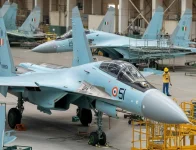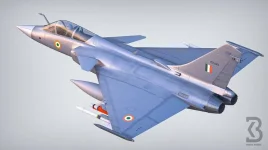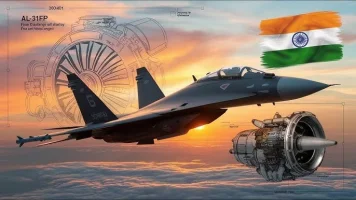- Views: 2K
- Replies: 10
In the midst of the ongoing hostilities between India and Pakistan, advanced Turkish-made unmanned combat aerial vehicles (UCAVs) in Pakistan's arsenal, specifically the Bayraktar TB2 and Bayraktar Akıncı, have been notably absent from combat operations.
A senior official from the Indian Air Force (IAF) has indicated that Pakistan is intentionally keeping these sophisticated drones grounded, reportedly due to concerns that they could be lost to India's formidable and integrated air defence network.
This situation highlights the challenges faced by slower-moving UCAVs like the TB2 when operating in airspace protected by advanced air defence systems.
Pakistan has made significant investments in enhancing its aerial capabilities through the acquisition of Turkish UCAVs. The Bayraktar TB2, a medium-altitude long-endurance (MALE) drone, gained global recognition for its cost-effectiveness and operational success in conflicts such as Nagorno-Karabakh and Libya, particularly against adversaries with limited air defence capabilities.
The Akıncı, a more advanced high-altitude long-endurance (HALE) UCAV, is equipped with a substantial 1,350 kg payload capacity and sophisticated avionics, designed to undertake missions comparable to those of fighter jets. Reports indicate Pakistan received approximately six to seven Akıncı drones in 2023, following an earlier procurement of an unspecified number of TB2s, integrating them for intelligence, surveillance, reconnaissance (ISR), and strike missions.
Despite a significant barrage of drone and missile attacks reportedly launched by Pakistan against 36 Indian locations on May 9-10, 2025, neither the TB2 nor the Akıncı UCAVs were deployed. Instead, Pakistani forces were observed using smaller Turkish SONGAR multirotor drones and Byker YIHA III loitering munitions, a number of which were successfully intercepted by Indian air defences.
Observers have noted the complete absence of TB2 or Akıncı drones near Indian borders, leading to speculation that Pakistani military planners are aware of the significant risks these platforms face from India's air defence capabilities.
India's comprehensive and layered air defence system has emerged as a critical deterrent in the current situation. This network includes long-range systems like the S-400 Triumf, medium-range systems such as the indigenous Akash and Israeli Barak-8, and short-range systems like the SPYDER. These are further augmented by upgraded L-70 air defence guns and an electronic warfare (EW) counter-unmanned aerial system (CUAS) grid.
The IAF official highlighted that while the S-400 is typically reserved for high-value aerial threats such as enemy fighter jets, its presence establishes a protective umbrella that discourages the use of larger platforms. This leaves smaller drones and UAVs to be engaged by systems like the Akash surface-to-air missile system and L-70 guns, which have reportedly achieved multiple successful engagements.
The Indian-developed Akash missile system has proven particularly effective. Its Rajendra radar and dual-guidance mechanism are optimized for engaging threats at low to medium altitudes.
A 2024 report by Azerbaijan’s AIR Center, which analysed Armenia's use of the Akash system, noted its capability to engage TB2-type drones beyond their effective weapons release range.
Furthermore, the reported downing of an Akıncı drone by Kurdish forces in the Qandil mountains in March 2025 using radar-guided missiles further underscored the vulnerabilities of these Turkish UCAVs in contested airspace, a lesson Pakistan appears to have heeded.
The senior IAF official stated, "Slow-moving UAVs such as the TB2 are not designed for operations in contested airspace where an adversary has deployed a robust integrated air defence system. Pakistan's choice to withhold its acclaimed Turkish UCAVs from active engagement indicates their apprehension about losing these assets to our defences. This once again demonstrates their limitations when facing a well-prepared opponent."
These remarks are consistent with increasing global scrutiny of the perceived invincibility of Turkish drones, which have encountered significant challenges in conflicts like those in Ukraine and Libya when confronted with layered air defence networks.
Pakistan's alternative strategy, which involved attempting to saturate Indian defences with smaller, more expendable drones, has also reportedly proven unsuccessful. The IAF reported the successful interception of 300-400 SONGAR drones between May 7-8, 2025.
The official suggested that Pakistan's misjudgment in believing that drone swarms could overwhelm India's air defence network has revealed a flawed understanding of India's capabilities, leading to considerable losses for Pakistan without achieving their strategic aims.
The non-appearance of the Bayraktar TB2 and Akıncı drones in the current conflict challenges the narrative, often promoted by Turkey and Pakistan, that these systems are decisive "game-changers" in modern warfare.
While these UCAVs have demonstrated effectiveness against less sophisticated adversaries or in environments with minimal air threats, their relatively slow speed (typically around 120-220 km/h for the TB2) and larger radar cross-section make them susceptible targets for modern radar-guided missile systems and electronic warfare measures.
The Akıncı, despite its more advanced features, is believed to share similar vulnerabilities, as suggested by its loss in Qandil and a reported crash in Libya in January 2025.



